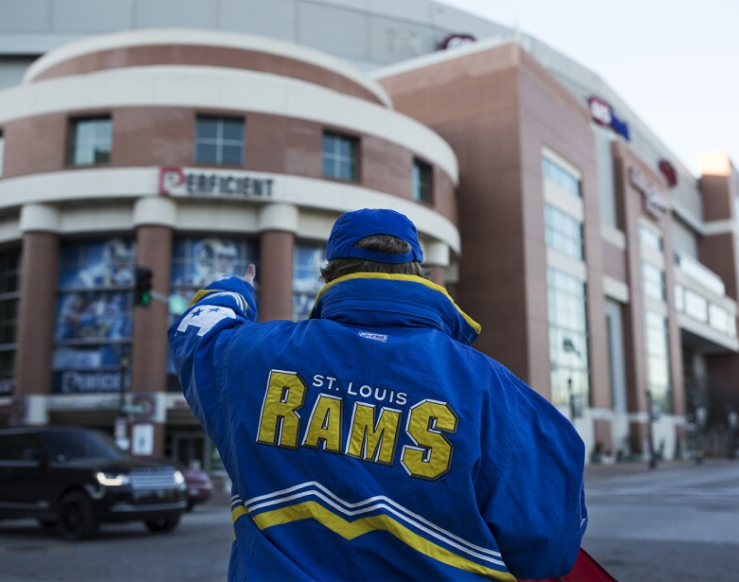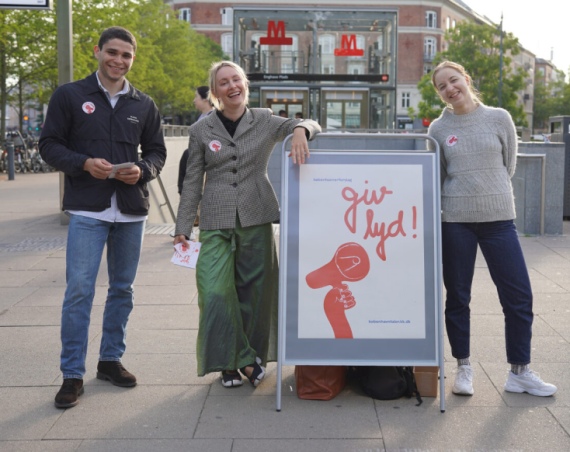Faced with the daunting task of allocating $250 million as part of the Rams settlement fund, the City of St. Louis and the Board of Aldermen embarked on an ambitious digital community engagement strategy to involve residents in the fund allocation process from the start.
Recognizing the limitations of traditional engagement and the widespread adoption of technology in the community’s day-to-day lives, the city’s team, led by Yusuf Daneshyar (Secretary of Communications & Public Engagement) and Cristina Garmendia (Policy Director to President Green), sought a digital community engagement platform that would maximize their reach and effectively gather data for decision-making.
Before diving into the how and the what, let’s take a look at the City of St. Louis’s core goals for community engagement:
- Shape the future of St. Louis based on current residents’ input and challenges
- Provide a low-barrier-to-entry platform to maximize their reach to as many St. Louisans as possible
- Build the foundation for a digital engagement strategy across all sectors and departments in the city
- Rebuild trust with their community
- Produce community-backed legislation that will allocate the Rams settlement funding
Choosing an online community engagement platform
Once they knew they wanted to prioritize including a digital tool for their data and input collection, the St. Louis team started to explore their options. First idea? Develop their own platform. Very quickly, they saw that would be too much of an undertaking. Next up, use social media. But for such an important project, the team knew they’d be competing with too much other content on those channels to get the meaningful engagement they were seeking. Enter community engagement platforms (special shoutout to the IT Department at St. Louis City Hall for recommending CitizenLab).
After a long deliberation process, CitizenLab’s platform was chosen for its user-friendliness and intuitive design, both for residents and city administrators to help ensure that digital literacy wasn’t a hurdle to platform adoption and usage. Knowing that this would be an additional tool in the team’s day-to-day work, ease of use and flexible customization was a critical piece for Cristina, who managed the process design and backend implementation of the platform. Additionally, the level of onboarding support – from training sessions to engagement methods brainstorming – signaled to St. Louis that this would be much more than a platform purchase – it would be a partnership.
“We understood going into this that we’re not going to know everything. And there are things that are going to come out through the process that we’ll need help with. So we just wanted to have a true partnership; we didn’t want just to buy a product.”
-Yusuf Danseshyar
St. Louis’s digital community engagement in numbers
- Over 7,200 residents have registered on the platform in three months.
- Between the survey and their ideation project, the city has collected over 3,500 ideas on areas of improvement.
- These ideas have been distilled into 7 focus areas based on the most commonly submitted trends and issues.
- Through online meetings, they have connected with 200 additional residents directly.
- They have received over 3,800 votes from residents to help prioritize top challenges to address
Building a culture of engagement before launch
The team knew that obtaining a platform wouldn’t be a silver bullet, so they put in the work upfront to get internal buy-in well before launching. This proactive approach was essential in building a culture of engagement, crucial for the success of the Rams settlement fund project. This project was not just about utilizing a new tool; it was about fostering a mindset change across different city departments, ensuring that everyone involved understood the transformative potential of public engagement in shaping the city’s future.
As an interdepartmental endeavor involving the Board of Aldermen, the Comptroller’s Office, and the Mayor’s Office, it required more than just coordination; it demanded a shared vision. The team recognized early on that building this culture of engagement was as much about aligning goals as it was about employing new technology. By engaging every stakeholder, including 14 lawmakers, through in-depth discussions and demonstrations of the platform, Cristina Garmendia (Policy Director for the Board of Aldermen) not only showcased the tool’s functionalities but also highlighted its role in fostering more inclusive, transparent, and efficient community engagement.
“The thing that we all agreed on across all 3 offices was, for our city, these funds have great potential for changing what our city looks like over the next 30 years. If they’re used purposefully and with intention and community buy-in, [the funds] could really have an impact. There was a shared understanding that for something like this, we need to do something different if we’re going to try to truly understand what St. Louis residents want.”
By ensuring that every team member understood the strategic importance and potential impact of the project, the St. Louis team set the stage for a more informed, collaborative, and dynamic interaction between the city and its residents. This foundational work in building a culture of engagement is a critical step toward realizing the project’s goal of shaping a vibrant, forward-looking St. Louis, driven by the needs of its residents.
Engaging with the community with intention
Now that the city’s team was internally prepped, they were ready to build and launch St. Louis’s Engagement Platform, and they brought the same level of intention to creating and sharing their platform as they did for preparing the strategy.

When drafting the survey for launch, Cristina emphasized the importance of sincerity in public engagement, and how effective community engagement hinges on the specificity and intentionality of the questions asked. She and her team crafted targeted, clear prompts for their survey that quickly elicited productive and sincere responses (their initial survey had almost 3,000 participants in two months!). Initiating the process with questions about daily life challenges in St. Louis, rather than directly about fund allocation, the St. Louis team could more easily identify core issues and patterns within the community that could and should be addressed. This method also helps facilitate continuous participation and a gradual build-up to more complex discussions in later phases, such as pairing challenges identified in the survey with real-life solutions.
Using our timeline feature, they also developed a well-defined timeline for the project to clearly communicate to the community the status of the project and any feedback they had, every step of the way. According to Yusuf, “I don’t think it’s necessarily fair to expect every resident to have every piece of information at their fingertips. They are just trying to live their lives. So having these things housed in one place that they can check on their own time is really key, so they can engage with it at a level that makes sense for their lifestyle. The onus is on us to update it and keep people informed.”
This commitment to informing the public both maintains transparency and fosters trust by showing how the input is valued and used (or not!) throughout the process. By demonstrating that engagement is a two-way street and committing to acting on public feedback, St. Louis is taking this community engagement opportunity to rebuild trust with the public.
Getting the word out about their online engagement strategy
Another key aspect of their strategy was to ensure broad outreach to bring as many people to the platform as they could. This included leveraging their social media audiences to inform the public about the platform and the engagement process. As a small communications team themselves, they also partnered with community organizations to get the word out by tapping into existing audiences and meeting people where they are, and where they’re paying attention to information. This was capped with a media strategy to help amplify their message and make a splash for the launch. Check out some of the press coverage they were able to garner for the project.
Finally, the city recognized the need to include non-digital natives in the process, such as by providing paper surveys at public libraries, and is actively considering other means to reach older residents to ensure inclusivity. The good news? At the end of the day, they can aggregate all of the data – even from in-person engagement – onto their platform to keep and analyze everything in one place.
Hear more about how the news covered St. Louis’s community engagement platform
Rebuilding trust through community engagement
The City of St. Louis’ innovative and deliberate approach to community engagement, both internally and externally, has seen incredible engagement right off the bat. By strategically leveraging digital tools and fostering sincere, targeted interactions, they have not only maximized public input for the allocation of significant funds but also laid the groundwork for a more inclusive, responsive, and trusted city government. Their success in engaging thousands of residents and collecting a vast array of ideas reflects a deepened connection and trust with the community.
Yusuf’s advice to fellow local government officials considering online community engagement? “Mean it.”
“If you’re going to consider a digital strategy like this, you need to be sincere about it. It can’t just be a box-checking exercise. If you’re going to ask people to participate, there really needs to be follow-through.”
And that’s exactly what St. Louis has done all along.
Check out our in-depth conversation with Yusuf Daneshyar to hear more about his team’s approach to community engagement in the City of St. Louis.





